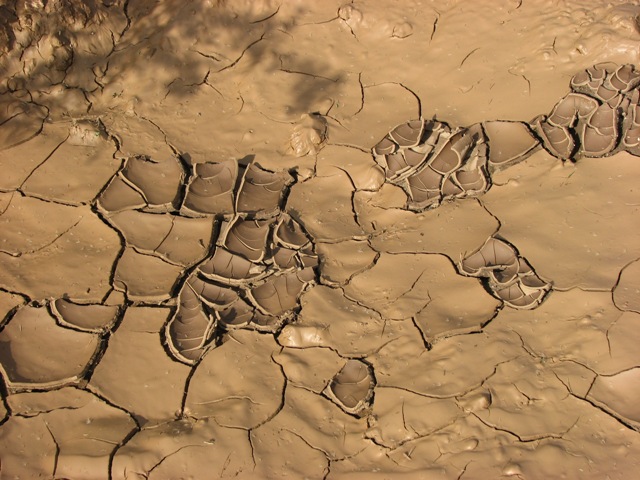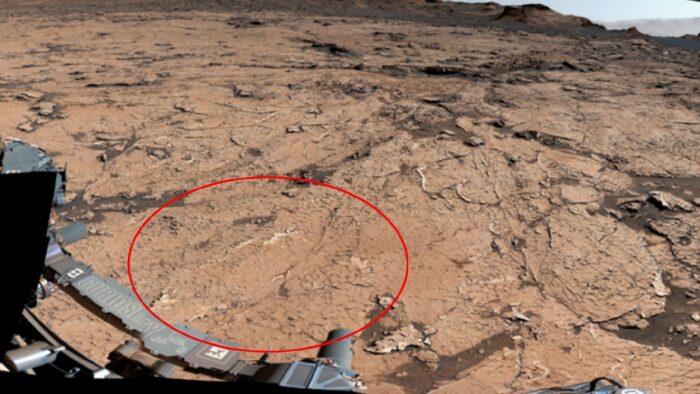Was Mars once covered in water?
Most scientists agree that the answer to that question is a very firm Yes.
Mars' surface is covered in evidence of past bodies of water, including the beds of former rivers and the presence of minerals (like gypsum) that require liquid water to form.
And now an image shot by the NASA rover Curiosity is pointing to yet more evidence of the planet's ancient water cycle.
The rover is travelling in the Gale Crater, a large depression that is believed to have once been a large lake. In 2021, a Curiosity photo revealed patterns of fossilized cracks across the ground. Cracks like these are formed on Earth in mud (soaked ground) when it dries out. See?

Cracks form in mud as the land dries out. (Wikimedia Commons)
But now even further analysis has revealed that these particular cracks were formed during seasonal cycles known as wet-dry cycles. This is the first known evidence of this on Mars, and it provides a fascinating glimpse into the planet's past climate.
Repeating pattern

The original panaromic photo taken by Curiosity. The circled area contains the cracks. (NASA/JPL-Caltech/MSSS/IRAP)
Here's how the researchers learned about the wet-dry cycle.
The cracks, which are between 3.6 and 3.8 billion years old, have formed in polygons. In other words, multi-sided objects with very distinct edges, not more random ones.
According to researchers, mud cracks only form polygons after repeated stages of drying and soaking. And as this ground repeatedlyt cracks, the patterns tend to go from being random to more complex in shape. They form in shapes like polygons!
What this suggests is that the ancient lake that was once in Gale Crater did not simply disappear in one continuous pattern. Instead, the levels of the lake changed many times, going from flooded to dried up and back again.
This is very much like and wet and dry season in many places on Earth, where places regularly flip between times of heavy rains and times of extended drought (no rain).
Another possible sign of life

Why did Mars' water dry up? (Wikimedia Commons/Kevin M. Gill)
Not only does this research help to confirm that Mars had seasonal weather, it also suggests that it could've been an excellent home for organic life.
As the study's lead author William Rapin of France's National Center for Scientific Research (CNRS) wrote in a statement, "wet-dry cycles are helpful — maybe even required — for the molecular evolution that could lead to life."
So Mars definitely had life?
Well, not so fast. While wet and dry seasons are helpful part of the process, it is no guarantee that life ever existed on the Red Planet. These cracks (made as the water disappeared) are at least 3.6 billion years old. Meanwhile, the oldest known fossils of life on Earth are 3.7 billion years old—and those were just tiny microbes, invisible to the naked eye.
Assuming that Earth and Mars formed at about the same time and same pace, that only leaves a couple hundred thousands years for life to develop. That is a pretty small window in evolutionary terms! (Scientists estimate that the last of the planet's lakes and rivers dried up 3 billion years ago.)
But with so much left to discover on our next door neighbour, findings like this are thrilling. They are reminders that the story of Mars is one that we're only beginning to understand!
 Researchers zoomed in on a photo by Curiosity and outlined the polygons in the ground. (NASA/JPL-Caltech/MSSS/IRAP)
Researchers zoomed in on a photo by Curiosity and outlined the polygons in the ground. (NASA/JPL-Caltech/MSSS/IRAP)








